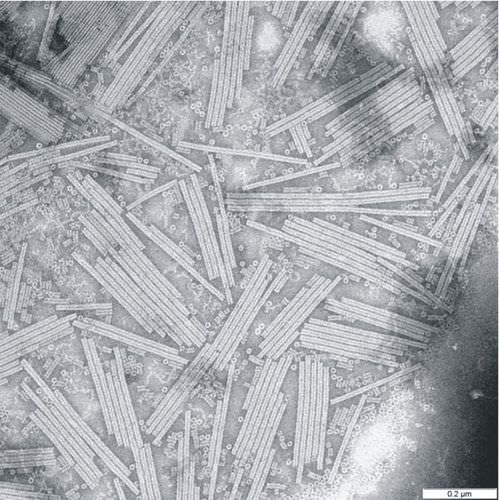11.23 病毒发现 -- -- 高级
章节大纲
-
How were first identified?
::最初是如何查明的?Using filters. What if you had a filter that could trap all things as small as ? Would viruses be trapped, or would they flow through the filter?
::使用过滤器。 如果您有一个过滤器, 可以将所有小到 ? 病毒会被困住, 还是它们会通过过滤器流过?Discovery of Viruses
::发现病毒such as rabies, yellow fever, and smallpox have affected humans for many centuries, but the causes of these diseases were unknown for most of this time. Even though people did not know what caused these diseases, they were still able to prevent some of them.
::狂犬病、黄热病和天花等疾病在几个世纪以来一直影响着人类,但大部分时间这些疾病的原因并不为人所知。 尽管人们不知道这些疾病的原因,但他们仍然能够预防其中一些疾病。In the late 19 th century, French microbiologist Charles Chamberland developed a porcelain filter with pores small enough to trap bacteria, but which allowed smaller particles to filter through. In 1883, Dutch botanist Adolf Mayer first described a tobacco plant disease that could be transferred between plants. The disease was thought to be spread by very small bacteria or toxins. Then in 1889, another Dutch scientist, Martinus Beijerinck, showed that a filtered, bacteria-free culture medium still contained the infectious agent. Russian biologist Dimitri Ivanovski published showing that crushed leaf extracts of infected tobacco plants were still infectious, even after passing the leaf extract through filters that trapped bacteria, demonstrating that the tobacco mosaic disease is caused by something smaller than a bacterium. At about the same time, several independent experiments showed that viruses were different from bacteria, yet they could cause disease in living organisms . These experiments also showed that viruses are much smaller than bacteria.
::1883年,荷兰植物学家阿道夫·迈尔首次描述了一种可以在植物之间转移的烟草植物疾病。据认为,这种疾病是由非常小的细菌或毒素传播的。 1889年,另一位荷兰科学家马丁纳斯·贝杰林克(Martinus Beijerinck)指出,一种过滤的、没有细菌的文化媒介仍然含有传染性媒介。俄罗斯生物学家迪米特里·伊万夫斯基(Dimitri Ivanovski)发表了一篇文章,表明被感染的烟草植物的粉碎叶片的提取物仍然具有传染性,即使在通过过滤细菌的过滤器通过叶片提取之后,也仍然有传染性,表明烟草麻木病是由比细菌小的细菌引起的。与此同时,一些独立实验显示病毒与细菌不同,但它们可能在生物中造成疾病。这些实验还表明,病毒比细菌小得多。In 1915, English bacteriologist Frederick Twort discovered bacteriophage , the viruses that attack bacteria. He noticed tiny clear spots within bacterial colonies and hypothesized that something was killing the bacteria. The invention of electron microscopy in the 1930s allowed scientists to see viruses for the first time. In 1935, American biochemist Wendell Stanley first crystallized the tobacco mosaic virus , shown in Figure . Tobacco mosaic virus (TMV) is of course, the particle which Adolf Mayer and Dimitri Ivanovski suggested caused disease in tobacco plants.
::1915年,英国细菌学家弗雷德里克·图尔特发现了细菌,细菌是攻击细菌的病毒。他注意到细菌聚居区内的微小明显点,并假设某些东西正在杀死细菌。1930年代电子显微镜的发明使科学家第一次能够看到病毒。1935年,美国生物化学家温德尔·斯坦利首次结晶了烟草混凝土病毒,如图所示。烟草混合病毒(TMV)当然是Adolf Mayer和Dimitri Ivanovski认为在烟草工厂引起疾病的粒子。An electron microphotograph of tobacco mosaic virus particles, also called TMV. They were the first viruses to be discovered.
::烟草混合病毒微粒的电子微摄影,也称为TMV,是第一批被发现的病毒。Summary
::摘要-
Tobacco mosaic virus was the first virus identified when scientists discovered infectious particles smaller than bacteria.
::烟草混凝土病毒是科学家发现比细菌小的传染性微粒时发现的第一种病毒。
Review
::回顾-
How were viruses discovered?
::病毒是如何被发现的?
Explore More
::探索更多 -
Tobacco mosaic virus was the first virus identified when scientists discovered infectious particles smaller than bacteria.

